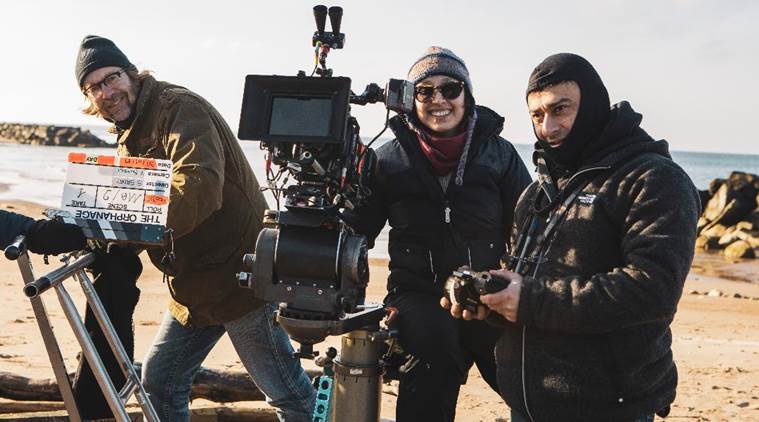
At the 72nd edition of the annual Festival De Cannes last month, a small Danish-Afghan film, Parwareshgah (The Orphanage), paid tribute to Bollywood. Set in the early ’90s in Kabul, the film directed by Shahrbanoo Sadat, 28 — considered one of the brightest young talents of Afghanistan — tells the tale of Qodrat, a teenaged orphan, who sells tickets of Hindi films in the black market outside theatres in Kabul. When he gets caught, Qodrat is remanded to the eponymous parwareshgah, where he meets other children like him and gets to attend school. Set in pre-Taliban Afghanistan, the film is a coming-of- age story of Qodrat and his friends, who struggle with their hormones, take on bullies in a country that was yet to be fully besieged by war and unrest. Her previous film The Wolf and the Sheep (2016) had won the top prize at the Director’s Fortnight, an independent non-competitive section of the Cannes film Festival which began in 1969. Parwareshgah, too, was screened in the same segment. Excerpts from an email interview:
What inspired you to direct Parwareshgah?
The story is based on my best friend, Anwar Hashimi. He used to live on the streets and sold tickets in black, and then he landed up in the orphanage. Anwar had shared with me his 800-page autobiography, which is still unpublished. In it, he has recounted the chaotic history of the country, through his own life. The last 40 years in the history of Afghanistan has been so dramatic that I wished to explore the past and tell Anwar’s story. He helped me with his texts, albums, friends and books. I found some material on the parwareshgah in the archives of the national TV of Afghanistan. I also visited the orphanage a few times — the building now belongs to the education ministry.
Amitabh Bachchan is a looming presence in the film; we hear Kishore Kumar’s song Muqaddar ka Sikandar, too, play in the background. It’s almost like a love letter to Bollywood.
Amitabh Bachchan is a god in Afghanistan. No one else has even come close to achieving that stature. Anwar was an extra in his movie Khuda Gawah (1992). I spotted Anwar in the film some years ago when I saw the film for the first time. Strangely, Anwar himself has seen Khuda Gawah 20 times and he has never spotted himself. Hindi films have always been very big in Afghanistan. People are able to speak Hindi and Urdu fluently by watching Bollywood movies over and over again. In the ’70s and ’80s, when things were better and there were cinema halls in Afghanistan, they would be packed. I think Afghans and Indians are connected emotionally, maybe because India has always opened its doors to Afghans by offering scholarships and making the visa process easier.
Parwareshgah touches upon adolescent sexuality. Your earlier film The Wolf and the Sheep that won the top prize at the Director’s Fortnight at Cannes, also spoke about young people and their dreams. Do you find it easier to tell stories through children and younger protagonists?
It was never planned that I will make films only with young people. But, surprisingly, all my work — be it a feature, documentary or a short film — has all revolved around children. I think maybe because I am small physically, it makes me feel that I am not an adult, and I easily connect with children. But for the most part, the story decides the cast.
You were born in Tehran, and came to Afghanistan at the age of 11. Did being an outsider of sorts influence your decision to be a filmmaker?
I never wanted to be a filmmaker. I had experienced high level of discrimination and humiliation in Iran as a child. My parents had been living there for 40 years but the Iranian government has a policy for not issuing citizenship to Afghan refugees. My first ever identity card was a small blue card, with ‘Special card for Afghan refugees’ written in bold on it. We returned to Bamyan in central Afghanistan in 2001. It felt like we were back in time — even the basic necessities of life didn’t exist. My dream was to do a PhD. I never imagined I’d make a film one day. I moved to Kabul to attend university and then enrolled in a French film workshop.
You’re one of the first female filmmakers from Afghanistan. What is it like to be a woman filmmaker in the country?
No one cares about culture or cinema in Afghanistan today. And, as I am a woman, I am almost invisible. I take advantage of it. I work with a European crew and I shoot my films in Tajikistan. I don’t take the risk of shooting films in Afghanistan. I work with non-actors from all over Afghanistan and I take them to Tajikistan. Preparing national ID cards, passports and visas for a group of 40 to 50 people is not an easy job, especially when no one really knows what I do. My life as a filmmaker in Afghanistan is nothing less than a comedy. I can also see it as a tragedy but I like to take things easy. I prefer to laugh at things than to cry. It makes my life easier.
This is your third outing at Cannes…
Just being screened at Cannes is a big thing for the film and me. A wider audience can see the film and get to know me. An award is a plus, and yes, it helps. But the more important questions start after Cannes — did the distributors like the film? How many territories will buy the film? How many tickets will sell?
What’s next?
I have been working on this trilogy, based on Anwar’s writings. The Wolf and The Sheep was the first part, Parwareshgah, the second. I am now working on part three. There’s also a comedy in the works.